- News
- Reviews
- Bikes
- Accessories
- Accessories - misc
- Computer mounts
- Bags
- Bar ends
- Bike bags & cases
- Bottle cages
- Bottles
- Cameras
- Car racks
- Child seats
- Computers
- Glasses
- GPS units
- Helmets
- Lights - front
- Lights - rear
- Lights - sets
- Locks
- Mirrors
- Mudguards
- Racks
- Pumps & CO2 inflators
- Puncture kits
- Reflectives
- Smart watches
- Stands and racks
- Trailers
- Clothing
- Components
- Bar tape & grips
- Bottom brackets
- Brake & gear cables
- Brake & STI levers
- Brake pads & spares
- Brakes
- Cassettes & freewheels
- Chains
- Chainsets & chainrings
- Derailleurs - front
- Derailleurs - rear
- Forks
- Gear levers & shifters
- Groupsets
- Handlebars & extensions
- Headsets
- Hubs
- Inner tubes
- Pedals
- Quick releases & skewers
- Saddles
- Seatposts
- Stems
- Wheels
- Tyres
- Health, fitness and nutrition
- Tools and workshop
- Miscellaneous
- Buyers Guides
- Features
- Forum
- Recommends
- Podcast
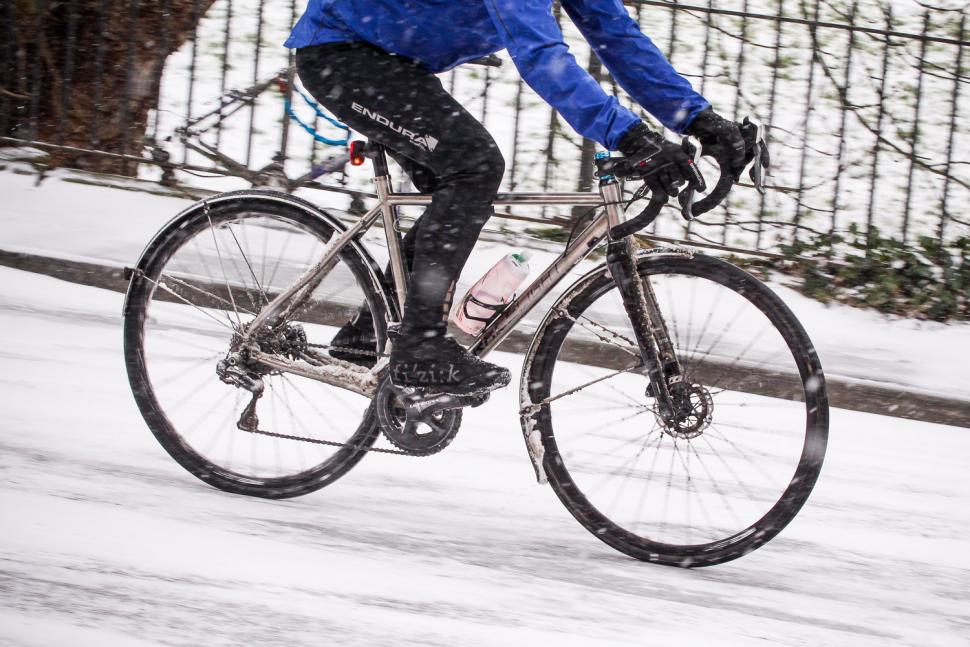 Riding in ice and snow-5.jpg
Riding in ice and snow-5.jpgHow to ride your bike through ice and snow — top tips for safe cycling when the mercury drops
When the temperature drops, roads develop a new hazard: ice and snow. Some choose not to risk it, and hang up their bikes for the frozen season, but with the right preparation you can keep riding all through winter. Every winter we re-publish our guide to riding when winter is at it's worst. It comes complete with many years worth of your comments too, there's plenty of wisdom in there.
Some winter survival tips are about preparation, some about riding technique. Let's get your bike sorted out first.
Before you ride
Maximise your contact patch. Fitting fatter tyres, and running them at lower pressures, will increase the size of your contact with the road, so go for the fattest that will fit your frame. If you know you're going to be riding in snow, then a treaded tyre or even a lightly knobbed mountain bike or cyclocross tyre will give extra grip.
Get studded. Even the best tyres won't grip sheet ice. If you think you're going to encounter proper black ice — which has a nasty habit of lurking at the bottoms of hills on minor lanes and anywhere water runs off fields — then get some studded tyres like Schwalbe Marathon Winters or Continental Nordic Spikes.
Go tubeless. The main benefit is that you can run super-low pressures for ice, and not risk punctures. You can buy specific tubeless rims and tyres, but we've had good results with standard rims, tyres, some sealant and a roll of electrical tape. You can only run the DIY version up to about 50psi, but that's more than enough for ice & snow.
Read more: Buyer's guide to tubeless wheels
For even more bike winterising tips check out road.cc's guide to winter-proofing your bike
Flat pedals. You may sacrifice some pedalling efficiency, at least until you get used to the different feel, but you are buying get out of jail extra control if things go wrong. If you can't live without clipless pedals, then loosening the release tension is another option and double-sided mountain bike pedals with recessed cleats in the shoes are good.
Ever thought about a fixed? This is the time of year when continuous drive really does come into its own – a fact known to old school roadies through the ages. You can slow a fixed bike down on ice without using the brakes and while maintaining traction and power to the back wheel. That's a very good thing when it's slippery.
Get down! Some people suggest that you lower your saddle slightly, so lowering your centre of gravity. The other advantages of dropping the saddle are that it's easier to get your feet down flat on the road should you suddenly need to use God's stabilisers, and less dramatically but just as usefully it makes it easier to start off sitting in the saddle when things are really slippy. That extra weight can the be difference between the getting the traction needed to move and having your back wheel slip with potential painful top tube consequences.
Did we mention it's cold? An extra layer on top of what you would normally wear in winter is a good idea. Not only is it much colder than most of us are used to but the state of the roads means you are likely to be riding slower than your normal pace, so you may not be generating the same levels of heat.
Pay particular attention to your hands and feet
Feet: overshoes, thermal socks and winter boots are all a good idea. Cold feet make for a miserable ride. It's tempting to put extra socks on but layering outside the shoes keep blood flowing to your toes and your feet warmer.
Struggle to keep your feet warm? Check out this guide to warm socks, overshoes and more.
Hands: It's even more important to keep these warm than your feet – trying to control your bike with two blocks of ice on the ends of your arms is not pleasant on any level. Good gloves are a must and glove liners – even inside thermal gloves if you feel the cold – are a good idea too, as are covers over the brake levers and grips (if your bike has flat bars). The benefit here is twofold: not only do they reduce the windchill to your hands but they also reduce the chilling effect on metal brake levers and bars with thin grips. Metal conducts the cold very efficiently, an argument if ever you needed one for upgrading to carbon levers or taking the budget option with some plastic ones.
Shopping for gloves? Have a look at our Buyer's Guide to winter hand warmers.
On the road
Choose your road. You may normally keep to the quieter back roads, but they aren't usually gritted when the ice and snow hits so in terms of keeping upright they are going to be the most difficult. The main roads will be clearer, even so you still need to take care.
Keep away from the kerb. Riding too close to the kerb is not a good idea at the best of times. It limits your room for manoeuvre and it's where all the crap from the road tends to accumulate. Even on major roads, the edge may not have been well cleared of snow, and it's where water pools and freezes so in winter it becomes a real no-no. Where main roads cross minor ones the ice and snow often fans out from the side road in to the carriageway and if you are going to fall off you don't want to be doing it within head cracking range of a kerbstone.
Give yourself longer to stop. It takes longer to stop safely or even to slow down on icy surfaces. Factor that in to your calculations when approaching junctions or making any other manoeuvre that is going to involve slowing down or stopping. It's amazing how quickly most people's brain's make this adjustment.And remember it's going to take other people longer to slow down too.
Get a disc-braked bike. If you're setting up a specific winter bike, then the extra stopping power and control of disc brakes makes them a no-brainer, and they're less affected by the wet than rim brakes.
Choose your line. If you can. The simplest way of avoiding problems when riding on icy roads is to choose the dry line. One recent winter saw very cold but dry weather in much of the country, so the roads weren't uniformly covered in ice. Instead, it was lying in patches on the road or in gutters, or it was run-off that had frozen across the road so the dry line wasn't always a straight one. Another year, sticking to the dry line was simply impossible, because compacted snow on untreated roads had just frozen. That's when you have to cope with actually riding on the ice.
Riding over ice
Lay off the front brake. Most of us know the old mantra “your front brake is for slowing down, your back brake is for stopping” but the bit that usually gets missed out is “except on ice where you really don't want to be losing any of your front wheel's traction. At all.” Haul on the front brake going over ice and any loss of control at the front is going to be sudden and very hard to recover from.
The ideal thing to do if you find yourself riding across a stretch of icy road is to smoothly pedal through it. If you need to slow down, the ideal thing is to be on a fixed. If you're not on a fixed then gentle braking on the back is your best bet. In countries where ice is more the norm some cyclists practise making the back step out under hard braking so that they will know what to do when it happens on ice. If you do feel the need to use the front brake use it along with the back and do it so lightly that the front wheel never stops rolling. We're talking gently scrubbing off speed, as we've already said you really don't want to lose traction at the front.
If the back does step out under braking the first thing to do is stop braking, you also need to make an instant decision to either pedal, or get a foot or even both feet down.
Choose your line. Again. Yes we already said that, but there's more. If there is a worn or dry line through the ice try to use it, but you may need to make a call here because the dry line may not be in the place you want to be on the road so you will need to proceed with caution. This situation is more likely to apply on minor roads or ones with a steep camber on which heavier vehicles have worn away the ice and snow more on one side; on these roads you would hope that other road users would also be proceeding with extreme caution too.
Don't let your natural desire to stay on your bike at all costs cloud your judgement. The other thing to consider when choosing your line is the camber of the road. Many of our local roads have a steep off camber that's fine under normal conditions but when it's icy means that not only is the ice against you but so is gravity because you are trying to ride across a slope and your tyre's contact patch is on the side rather than directly underneath you. The best place to be from a traction point of view is on top of the camber which is right in the middle of the road. It may actually be the only place that's rideable. If it is, use your common sense. On quiet straight roads where you can see and be seen it may be doable, otherwise get off and walk to the next section where you can ride. There's no dishonour in dismounting.
Keep it smooth. Avoiding sudden changes of direction and maintain a smooth pedalling action – it really pays off. Many experienced ice riders also say that you shouldn't ride in too low a gear mainly because it's harder to keep things smooth if you are really spinning the pedals – and potentially the back wheel.
Keep pedalling. Try keeping both feet on the pedals while you are moving. However, you may want to be able to get your feet off quickly to dab the ground and help in correcting any slides. The suggested method of dealing with your front wheel sliding is to relax your ankle on the opposite side to the slide and either dip your knee out or dab your foot to drag the bike out of the slide. In our experience though though this is only going to work at lower speeds, so you might want to keep it down.
Don't panic! Keep your head, neck and shoulders relaxed . What you don't want to do is to stiffen up and get twitchy… twitchiness can cause problems.
If you're properly equipped riding in the ice and snow is good fun — no, honestly, it is — but it's not compulsory. You won't get a medal for it so if you think conditions are too tough give yourself a break and get the bus/tube/walk or stay at home and noodle about on your favourite road cycling website… hopefully that's this one.
Of course, now you've read this it should start warming up any minute! In the meantime if you have any ice riding tips don't be shy - get on here and share them with the rest of us.
road.cc's founder and first editor, nowadays to be found riding a spreadsheet. Tony's journey in cycling media started in 1997 as production editor and then deputy editor of Total Bike, acting editor of Total Mountain Bike and then seven years as editor of Cycling Plus. He launched his first cycling website - the Cycling Plus Forum at the turn of the century. In 2006 he left C+ to head up the launch team for Bike Radar which he edited until 2008, when he co-launched the multi-award winning road.cc - finally handing on the reins in 2021 to Jack Sexty. His favourite ride is his ‘commute’ - which he does most days inc weekends and he’s been cycle-commuting since 1994. His favourite bikes are titanium and have disc brakes, though he'd like to own a carbon bike one day.
Latest Comments
- Bungle_52 0 sec ago
I was born in Southport which was in Lancashire at the time. I couldn't remember when it became part of Mersyside so I googled it and came up with...
- marmotte27 18 min 35 sec ago
Yes, 29" is just a marketing term. P.S.: Note that in Germany 700C is sometimes called 28"...
- HKR 1 hour 2 min ago
Not sure the Cycliq Fly 6 is particularly exciting at the moment. Not because this model had a problem in the rain. But more because Cycliq has...
- Bmblbzzz 8 hours 20 min ago
First I've heard of that. Goes off to investigate...
- chrisonabike 8 hours 38 min ago
I'm confident you won't regret it! Although I'm passing judgement in some ignorance (being rather a social media hermit barring this site)....
- David9694 9 hours 20 min ago
For real?
- mattw 9 hours 23 min ago
Nothing suitabel innthe range at my small local Halfords. Next stop JE James in Chesterfield, or a larger Halfords.
- chrisonabike 10 hours 7 min ago
I always wondered why they had PSI ops units* ... clearly it's to exert pressure on the popular imagination....
- Rendel Harris 10 hours 47 min ago
I don't actually agree with de Vlaeminck's comments, let's wait until the end of a career to see where people are, Pogacar isn't that far off in...
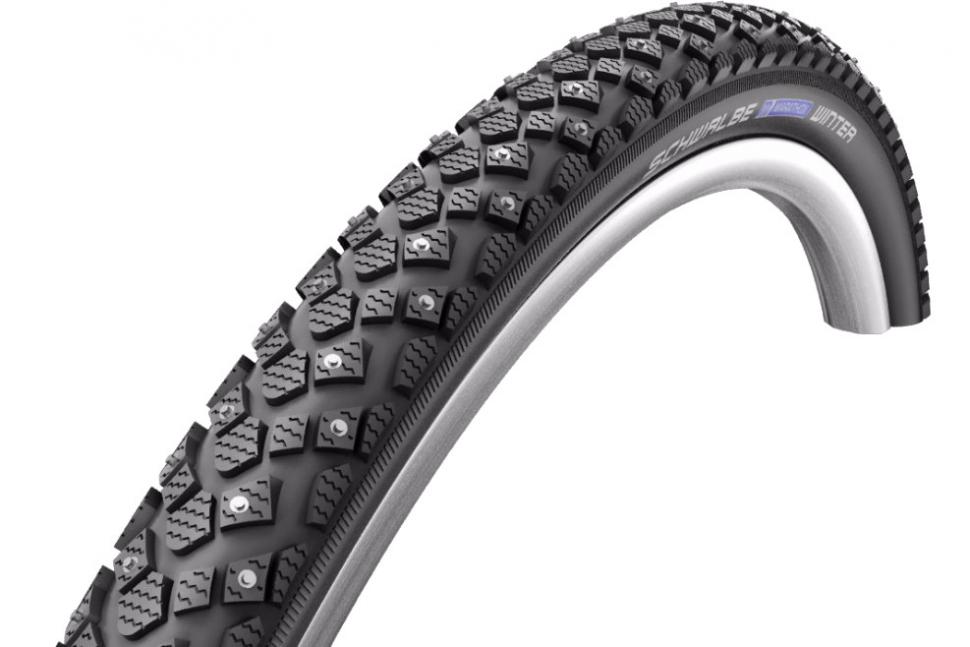
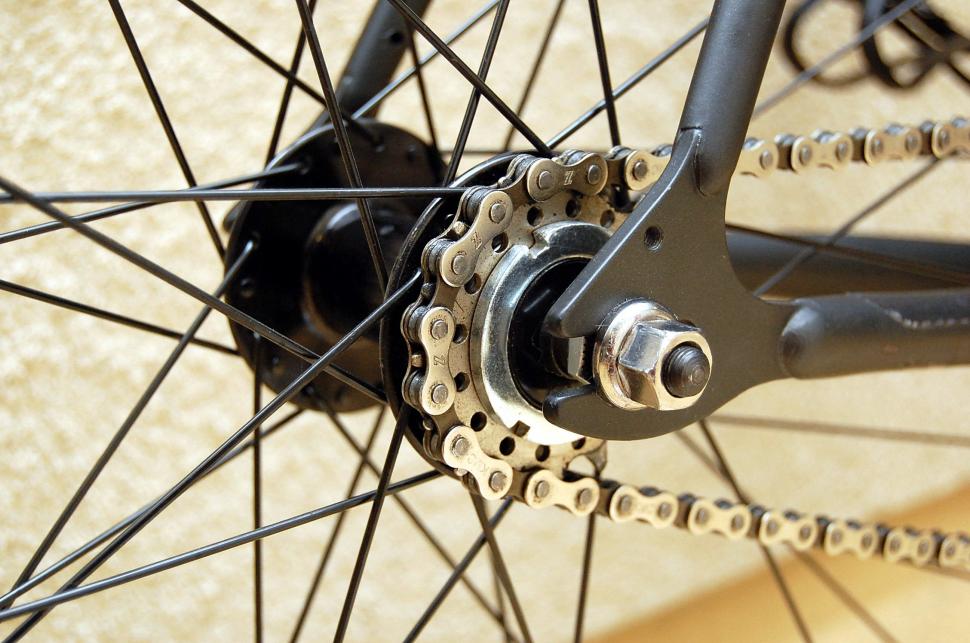
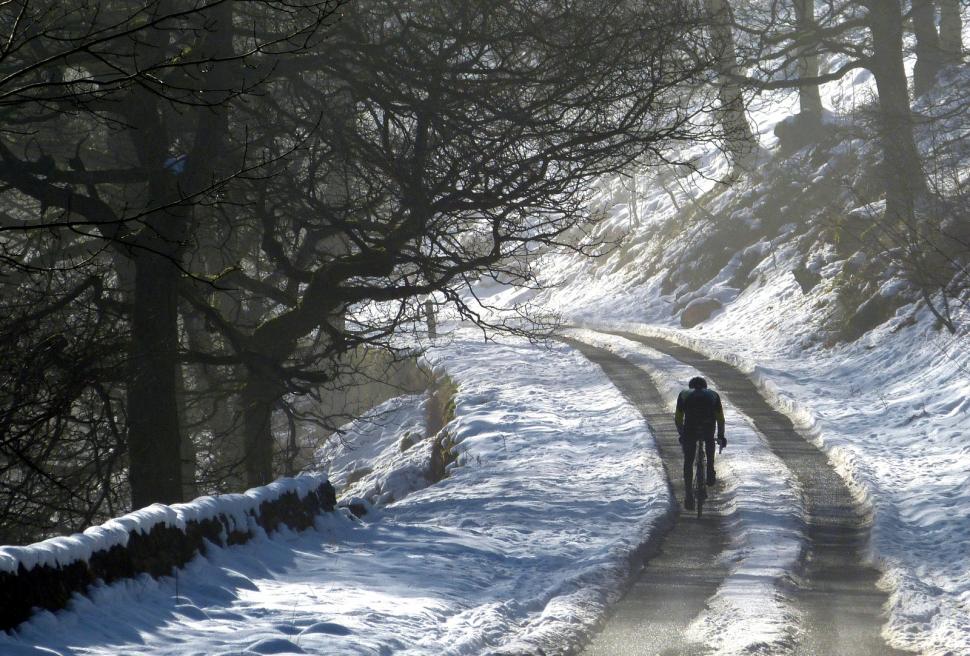
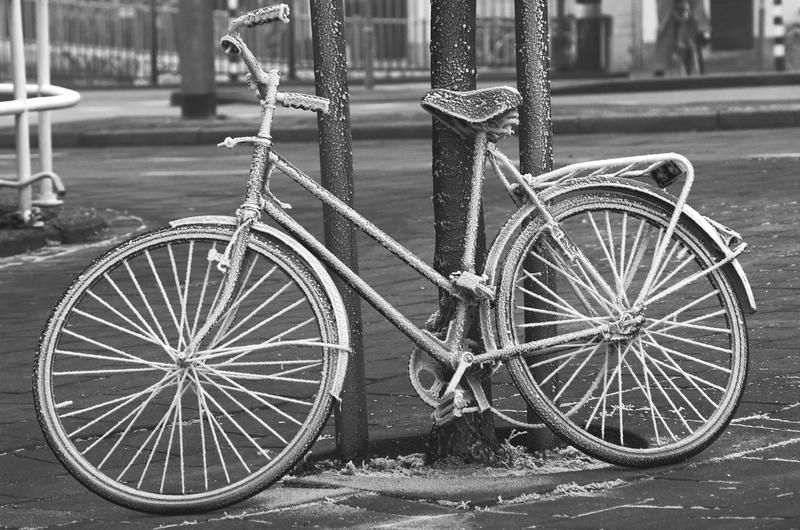
Add new comment
124 comments
Marathon winter. Works miracles. The only problem is that they'll bite you in the behind when there's no compacted snow/ice. Where I am that makes them an iffy proposition because depending on the winter, there's only a week or so that they're really useful. But during that week, nothing else really helps.
In early December 2022 there was also a lengthy cold spell. Then, the roads soon pulled moisture out of the air and paths and roads became icy and dangerous. So far, here in Lancashire, the well used roads have remained dry and safe and the Marathon Plus feel secure. I daren't go up into the very attractive local hills, after I was lucky to escape a hard fall on ice without a hip fracture 3 years ago. I spoke to a 35 year old who had fractured his hip in a fall that same season. I am tempted by these reports of Marathon Winter, even though they won't get much use and it would be tedious changing them frequently.
Spiked tires. They're a pain 95% of the year (where I am) because noisy, draggy, heavy, fast-wearing but when it's freezing and there's snow/ice they're the only game in town.
.
Yup, Beacon Fell is brill, isn't it?
.
Pages